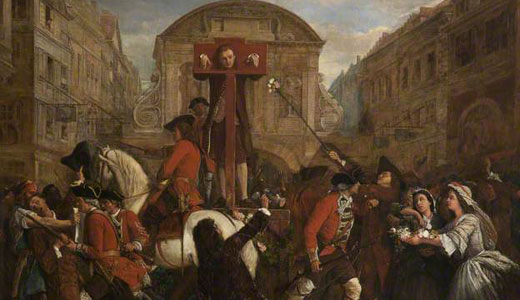
On or about July 31, 1703, Daniel Defoe, later the author of “Robinson Crusoe,“ was put in the pillory as punishment for “seditious libel,” for having written a satirical pamphlet defending freedom of religion.
His pamphlet, “The Shortest Way with Dissenters,” was an attack on the church and political establishment for suppressing dissent. This was an era when religious dissenters were among the “radical” protesters of their times. The pamphlet satirically suggested that instead of passing laws against all religious dissenters – including Protestant “nonconformists” like Defoe himself and many who emigrated to the New World – the easier solution would be to simply kill them.
Unfortunately Defoe’s proposal was taken seriously by some of the Anglican Tories in government. Once it was realized that his pamphlet was a satire, the authorities took revenge, arrested Defoe, and sentenced him to a large fine, time in Newgate Prison, and three sessions in the pillory.
Canadian English professor Steve King notes:
“The pamphleteer William Fuller, pilloried a few weeks before Defoe, said that being ‘stifled with all manner of dirt, filth, and rotten eggs’ was worse than his thirty-nine lashes. Earlier Puritans convicted of stepping over the line with their writings had had their ears cut off while in the pillory, or nailed to the wood.”
King, who teaches at Memorial University in St. John’s, Newfoundland, adds that “some of those pilloried had died from the pelting of the crowd, or been permanently disabled.”
Undoubtedly aware of this, while awaiting his pillorying Defoe composed a sarcastic poem, “Hymn to the Pillory,” in which he wrote:
“Tell us, great engine, how to understand
Or reconcile the justice of this land…”
Legend has it that this poem struck such a chord with the public that it led his audience at the pillory to throw flowers instead of the “dirt and filth,” and to drink to his health.
Defoe served his three-day sentence in the pillory at London’s Charing Cross (now Trafalgar Square).
Photo: “Daniel Defoe in the Pillory,” an 1862 painting by Eyre Crowe, in the collection of the Salford Museum & Art Gallery, Manchester, UK.










